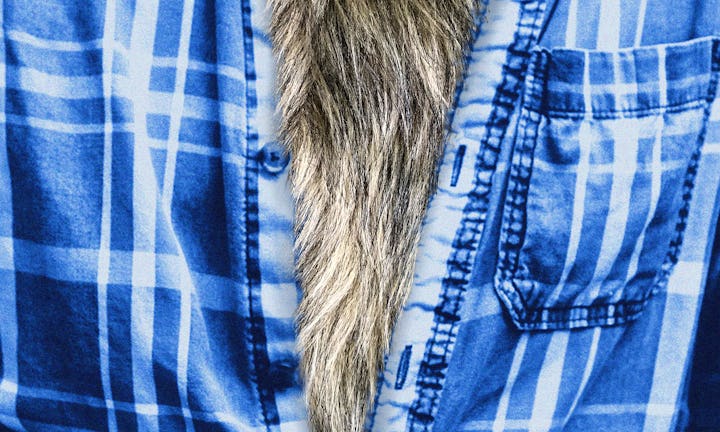What’s Great About Having A Hairy Chest, According To Science
Being a hairy man isn't so bad, research shows.

A hairy chest can be a source of insecurity for some men, with beaches, public pools, and yard work on hot days all potential locales of shame for really hairy men. But if you’re one of those hairy men who questions the purpose of his chest hair, science has discovered many benefits that come part and parcel with more hair on the pitch.
Certainly, some hairy men may elect for grooming their chest hair with electrolysis, shaving, or waxing. And there are those out there who, through sheer chance, have a baby-smooth bod. But for those on the fence as to whether they should trim their chest hair, science has a few things to say about your hairy chest before it goes.
A Hairy Chest Might Mean You’re More Intelligent
The hairier the chest, the smarter the man, at least according to one survey that found nearly 50% of medical students were considered “very hairy” compared to 10% of the general population. (We’d love to know exactly how they surveyed this, but data is data.) Although the research is dated, another study found that a majority of members of Mensa, or the genius club, had thick chest hair as well.
It’s not completely clear why hairy men seem to be more intelligent on the whole. And it’s entirely possible this is a coincidence. However, it may just as well be true that hairy men choose to stay in and study instead of being shamed at pool parties.
Your Chest Hair Might Match Your Father-in-Law’s Hairy Chest
Oddly, studies suggest your chest hair might resemble that of your father-in-law. The hypothesis is that women’s preferences in chest hair could be heritable from their mothers. It also may be a result of sexual imprinting — that is, women select men who remind them of their fathers. Regardless, hairy men may not want to be shirtless with their in-law lest they recognize some uncomfortable commonalities. Bonus: You now have a surefire get-out-of-in-law-pool-party card that your partner will be loathe to argue against.
A Hairy Chest Is Popular Among Older Women
Despite the fact that testosterone levels influence chest hair, women are not that into it when they’re at their most fertile, according to a study of nearly 300 women. Researchers found that more fertile women opted for men with less chest hair. However, postmenopausal women preferred more chest hair. So for men who look like they’re always wearing sweaters, enjoy your one-way ticket to Cougartown. But for the hairy father who’s not ready to expand his family further, consider chest hair a second form of birth control.
Uneven Chest Hair Is Normal
In 1965, researchers categorized chest hair into 15 unique patterns, spanning four separate areas of the chest, in a study of 1,400 white men ages 17 to 71. Sternal, infraclavicular (below the collarbone), pectoral, and circumareolar (areola) hair make up the four areas where chest hair grows, with a majority of it growing on the pecs and sternum. The most common chest hair pattern was the pecto-sterno-infraclavicular pattern, in which the breast, sternum, and end of the clavicle are hairy.
This early research established that it was common for men to have asymmetrical chest hair that followed different patterns on each side. So whatever odd chest hair you have, you’re probably not alone.
Your Chest Hair Could Always Be Worse
Even the hairiest man in the world could’ve been hairier if history had taken an alternative route, scientists suspect. Although early hominids were covered in body hair as a way to keep warm, about three million years ago their fur stopped serving that purpose and started put them at risk of overheating. Thanks to natural selection, humans shed excess body hair and evolved to sweat instead. So no matter how hairy you are, it could always be worse — you could have inherited the chest of Australopithecus (or Steve Carell).
This article was originally published on